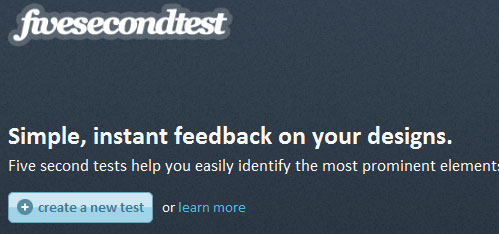How To Explain To Clients That They Are Wrong
Music on page load. Home page banner of a jigsaw-puzzle globe with a piece missing. Sometimes you just know that what a client is requesting is wrong and that you have to find a way to tell them. But how?
Is The Client Wrong?
Before getting into how to explain to a client that they’re wrong, ask yourself, “Is the client wrong to begin with?” Just because you don’t approve of the direction they’re taking or of a request they’ve made doesn’t necessarily mean it is not a step in the right direction for the project. To be able to answer this question effectively, you need to train yourself to be completely objective and humble when dealing with client requests.
Further Reading on SmashingMag:
- How To Convince The Client That Your Design Is Perfect
- Turning All Clients Into Dream Clients
- How To Identify and Deal With Different Types Of Clients
- Invoice Like A Pro: Examples and Best Practices
First of all, appreciate one critical thing: the client probably knows their target audience a lot better than you do. Just as web professionals quickly learn personality types among their own clients, your client interacts with their target audience on a daily basis and knows what makes them tick… and that may be just what makes you cringe.
You can begin to establish if the client is wrong simply by exploring why the client is making such a request and what the business case for it is. It could well be a situation in which they spoke to many people in the target audience demographic, and they all said that they were more likely to click an animated Flash banner link than a static one, or that they felt more engaged by a website that had stock images of smiling people everywhere.
It could be that the picture of the jigsaw-puzzle globe with a piece missing actually sums up the client’s sales pitch quite well and that similar messaging has proven to win over potential customers in the past.

Of course, when faced with such a situation, a good web professional would understand the business driver and suggest alternative solutions that convey the same message and achieve the same goal but that are unique, original and creative.
Whatever the case though, always keep an open mind. Don’t assume the client is wrong before seeing the evidence. One guarantee in this business is that the more you design and develop websites, the more often you’ll find yourself in situations where, six months after a project’s launch, you hear that the most positive feedback from users wasn’t the cool bit of JavaScript you implemented using groundbreaking technology, but rather something that you considered boring and unoriginal but that excited the client during development. We deliver websites for the client’s target audience, not our peers in the web community: sometimes painful to swallow, but always true.
That scenario aside, let’s put our cool hats on again and assume that the request for the jigsaw-puzzle globe has come in, and that it clearly has nothing to do with the client’s business, and that it has made you curl up in a corner of the room, banging your head against the wall, muttering “Why? Why? Why?”
What approaches can you take to explain to the client that, in your professional opinion, they’re wrong?
Speak The Client’s Language
One of the most common problems, especially among freelancers, is an inability to speak the client’s language. Being able to speak in a way that relates to the client’s business sense is crucial at all stages of managing a web project, but never more so than when challenging a client’s decision.
If you’re trying to explain to a client that a rotating banner (or any other feature) may not be the most effective use of their budget, rather than say something like, “I just don’t think it will work,” or “I’m not sure you have the budget,” ask instead how they think implementing it will benefit their business, generate more quality leads or increase conversions.
Always emphasize the main goals, or KPIs (key performance indicators), of the project. You’d be surprised by how often such a question will result in a few seconds of uncomfortable silence, as the client realizes that they want the feature because they think it looks cool, when in fact they can’t connect it to a KPI.
Building a website or web application should be treated in the same way as growing a business:
- Know what you want to achieve.
- Define some measurable KPIs or goals.
- Develop a plan.
- Begin executing the plan.
- Evaluate every decision along the way to make sure it supports a KPI, thus taking repeated steps towards achieving the project’s goals.
By maintaining this approach, you will also radically change the client’s opinion of you, from that of a creative hippie-type to a business-savvy web designer or developer whom they should listen to if they want to stay focused on the purpose of the project.

Being able to speak the client’s language will undoubtedly help greatly when the time comes to tell the client that they’re wrong. Beyond using Buzzword Bingo words with confidence, you need to be able to back them up with valuable advice drawn from your area of specialization.
Establish Yourself As The Expert
One of the most important ways to make the ordeal of explaining to a client that they’re wrong as stress-free as possible for both parties is to establish yourself as the web expert. If you do this, the client will completely trust you and your recommendations without a moment’s hesitation. Perfick!
But even if you are a web expert, the position is not always easy to establish, because it usually only becomes apparent over time, after you’ve gotten a few successful decisions or projects under your belt with the client. It doesn’t help either that many clients still regard creative digital agencies and freelancers as either kids living in their parents’ basement or shady professionals out to take them for every last penny.
Though a challenge, you can establish your credibility quickly using a few methods, some of which are relatively simple to do.
Be Professional
Before they’re convinced that you’re a digital professional and that they should trust your recommendations, you must first demonstrate your professionalism by doing the basics well:
- Be punctual at meetings and teleconferences.
- Always speak in a professional manner.
- Deliver pre-sales paperwork on time.
- Present all documents and images on professionally branded templates.
- Use correct grammar and punctuation in emails.
You’d be surprised by how quickly clients pick upon deficiencies in these basic business skills. Their perception of you and your recommendations will be immediately affected. Unless you come across as the consummate professional early on, shaking off this reputation will be difficult.
Don’t Be Shy About Citing High-Profile Clients
You could well be a digital guru who has spent years working in the industry and earned the respect of the web community, but most clients won’t understand what this means. They have never heard of websites such as Smashing Magazine or magazines such as .Net, and they probably won’t grasp the gravitas that comes with being a speaker at web conferences such as SXSW.
However, all clients tend to respond when you say you have worked on a high-profile brand website. When clients hear that you’ve been hired by a big name that they’ve heard of and whose products they perhaps use, they sit up like a meerkat and think they’ve hit the jackpot. Simples!
While some web folk aren’t always comfortable selling themselves, and while big brand experience is not always proof of ability, it almost always resonates with clients and makes them see you as more credible. This reinforces your position as an expert whose advice should be heeded. After all, if big brand X thought you were good, you must be, right?
Sometimes, of course, no matter how much credibility you demonstrate, a client may choose not to listen to your recommendations. But perhaps they’ll listen to others…
Back Up Recommendations With Evidence
How often in life have you volunteered your point of view to someone for months, only to be beaten down each time; and yet when someone else comes into the picture and says the exact same thing, their advice is seized upon as revolutionary. This is human nature and happens just as much when explaining to clients that they’re wrong.
If a client is, for whatever reason, unpersuaded by your arguments, you might want to consider going all CSI on them and producing evidence that backs up your recommendations.
This evidence can come in many forms. For example:
- Blog posts from world-respected web experts.
- Statistics from large usability studies.
- Well-known cases where the same thing was tried and had negative results.
This kind of evidence is obvious. But sometimes, the less obvious kind can be just as effective:
- Guerrilla usability testing, by asking the client to obtain feedback from employees within the company.
- Using free tools like Five Second Test.
- Submitting designs to communities dedicated to providing design feedback, for example Feedback Army.
- Feedback from customers with whom the client has a good relationship.
- Setting up a poll on the website that presents both ideas.
- Web analytics from the current website.
Common points of contention will be which browsers to support, which screen resolutions to optimize for and where to put the fold. But no matter the debate, backing up your point of view with trusted third parties can sometimes tip the balance in your favor and improve how the client perceives your dedication, enthusiasm and passion for getting it right.
Sometimes, Being Direct Works
When all else fails, you could always tell the client flat out that they’re wrong. This is always a risky move, because clients will react differently. Some will appreciate it, while others will find it disrespectful or personally insulting. But if you feel strongly about it and you’ve tried every other method, being direct might do the trick.
Personally, I’ve been in situations in which I’ve had no alternative but to tell a client that their request is “naff.” To my surprise, despite the ferocity with which the client initially defended their opinion, they backed down immediately and thanked me, saying that this is what they were paying me for: to be strong and stubborn and to tell them things like this. However, merely saying that something is naff and nothing more is not ideal; you have to offer an alternative solution.
Use this approach with caution. Take into account your rapport with the client, and be passive in your tone of voice. Also, choose your method of communication wisely; for example, being so direct by email is usually a big mistake because of the possibility of misinterpretation.

If possible, be direct with the client face to face or by telephone. This allows you to deliver the message directly and set the right tone. You will also be able to observe the client’s body language or hear their response instantly and then quickly adjust your approach if needed. Generally, if a client turns green with fury, their nostrils emit a trace of steam and their clothes rip at the seams, you may want to back down and move swiftly to the next item on the agenda… or call an ambulance because they may be ill.
Of course, sometimes no matter what you say or do, a client will overrule and insist that you follow their request. You know what? That’s okay. It happens. That’s life.
But that doesn’t necessarily have to be the end of the debate!
Know When And How To Admit Defeat
Occasionally you’ll try every known method of explaining to a client that they’re wrong, and nothing works. They’ll continue insisting that you design or develop whatever they want or else they’ll go to someone who will. And yet you feel with complete sincerity that they’re making a mistake that will have a negative impact on their business. This is never a good situation to be in.
There really are no hard and fast rules on what to do in such a situation. Each case should be treated on its own basis. But with experience comes the instinct of knowing when to admit defeat and do as you’re told.
This feeling is never nice, but sometimes that’s how it is. And if you have to sit in the corner and be quiet, do it professionally and politely. Under no circumstances should you throw your toys out of the pram and give the client attitude. Simply explain to them that you have put forward your recommendations and given your reasons. At the end of the day, it’s their business and their decision. It stings, but you’ve done all you can, and your dignity remains intact. But don’t give up yet!
Treat Defeat as an Opportunity
Saying that good entrepreneurs view every defeat as an opportunity is almost a cliché these days. But it’s true, and these situations are no different. There’s admitting defeat, and then there’s pretending to admit defeat! Once you’ve been beaten down by a client, accept it, get over it and think positively about how you can turn defeat into a win/win for everyone.
For example, suggest to the client that if they choose to press ahead against your recommendation, then your next recommendation will be to implement some custom web analytics to monitor the outcome of the decision.

For example, if a client insists on giving the home page banner a small call to action that, in your opinion, is difficult to read or not prominent enough, persuade them to let you implement some A/B testing: one month with their banner and one month with your proposed solution, and let the statistics do the talking. No client on earth would continue to insist on their solution if yours delivered a better return on investment.
If you’re thinking, “What the heck is A/B testing?” even better! This is an ideal opportunity to learn a valuable skill while getting paid and giving your client excellent service!
Summary
Explaining to a client that they’re wrong is never easy. It could blow up in your face and damage what was a good relationship. But everyone is wrong sometimes, and clients are no different. Always start by asking yourself if the client is, in fact, wrong. Or are you trying to impose your opinion (based on a narrow web-only view) on what is ultimately a business decision that affects the client’s entire strategy, both online and offline.
If you conclude that their direction is still misguided, open a dialogue with them in language they relate too: business language. Rather than say it won’t work, ask them what goals or return on investment they think the direction will help achieve. Establish yourself as the digital expert from the moment you make contact with the client by conducting all aspects of your work with professionalism. Do everything you can to position yourself as someone who has the experience to suggest alternative solutions. And where possible, back up your recommendations with third-party material and user feedback.
If all else fails, be direct with the client. But know which clients you can be direct with and when you will have to back down. Finally, don’t let being overruled be the end of the debate. Suggest testing periods, and let the web analytics do the talking. All clients respond when they see important metrics go up rather than down!
What are your favorite ways of telling clients that they’re wrong?
Related Posts
- Nudging Clients In The Right Direction … To Give Them What They Want
- Clients from Hell A collection of anonymously submitted client requests that are just wrong, and wrong in such creative ways! These situations probably could have been avoided with better client management, but they’re still a giggle to read.* How To Communicate Design Decisions To Clients? Brian Armstrong gives some great advice on how to guide a client through your design decisions that should leave them feeling confident in your recommendations.



 Agent Ready is the new Headless
Agent Ready is the new Headless


 SurveyJS: White-Label Survey Solution for Your JS App
SurveyJS: White-Label Survey Solution for Your JS App


